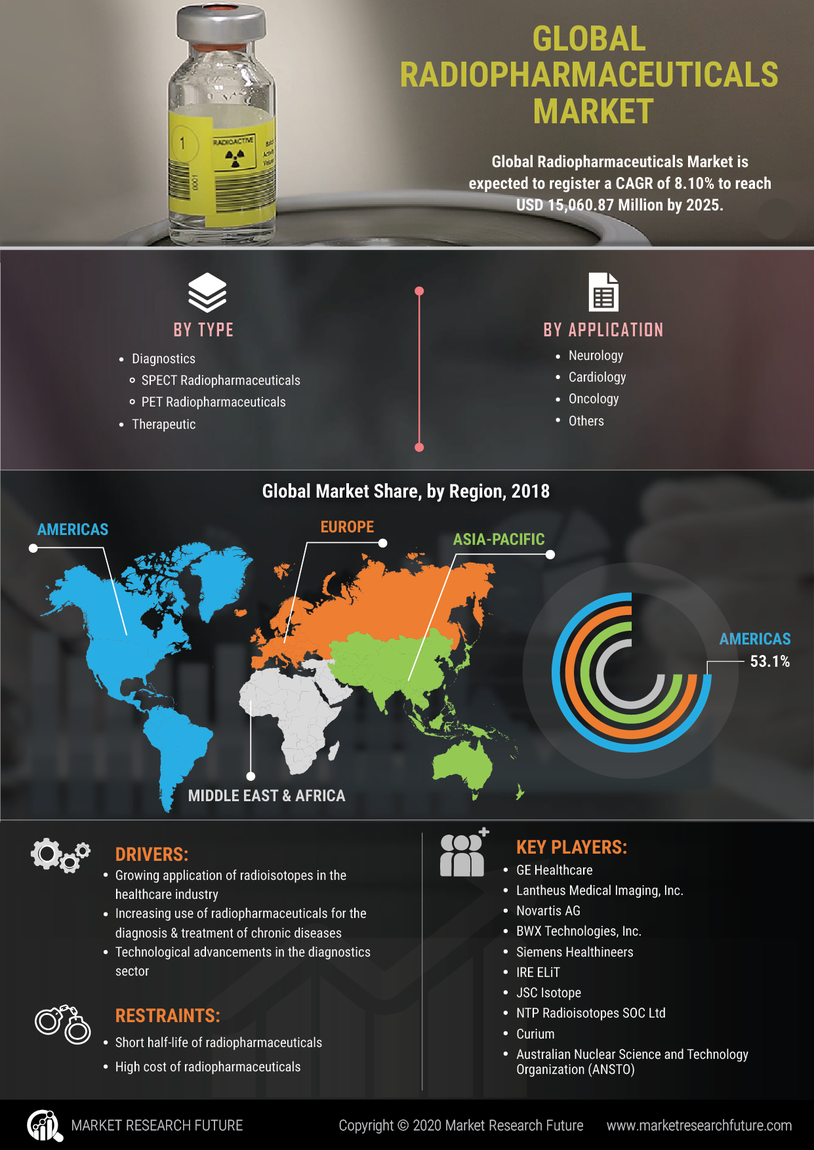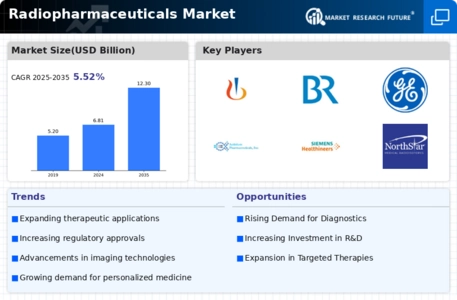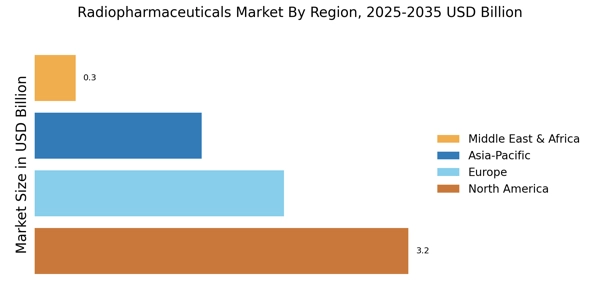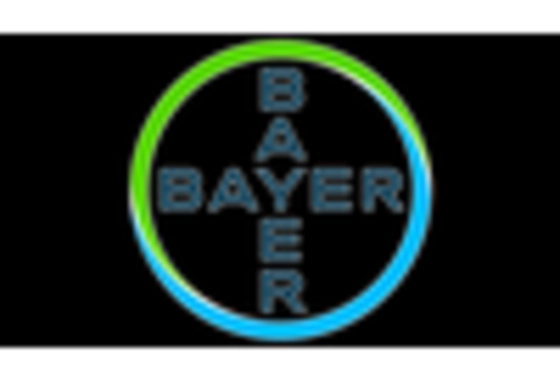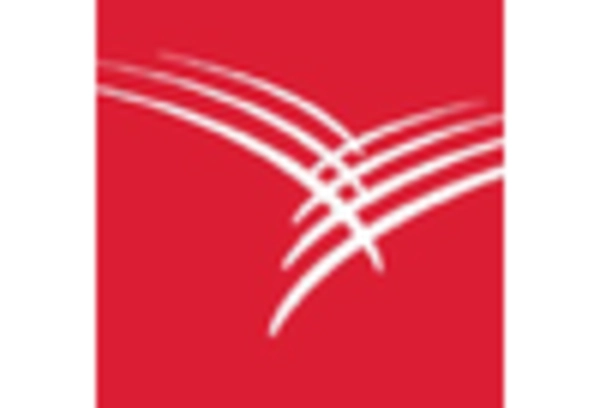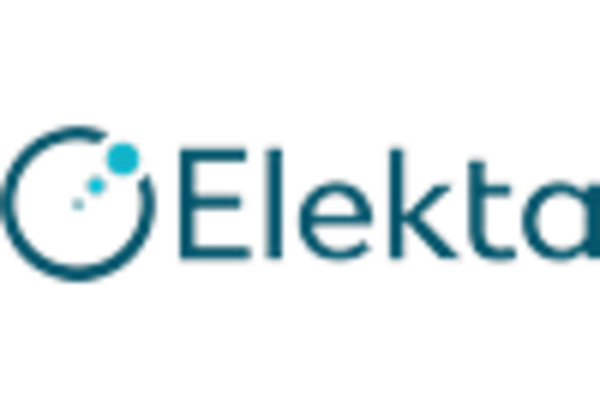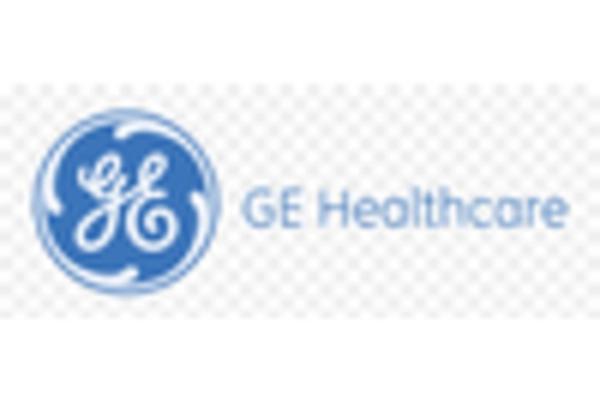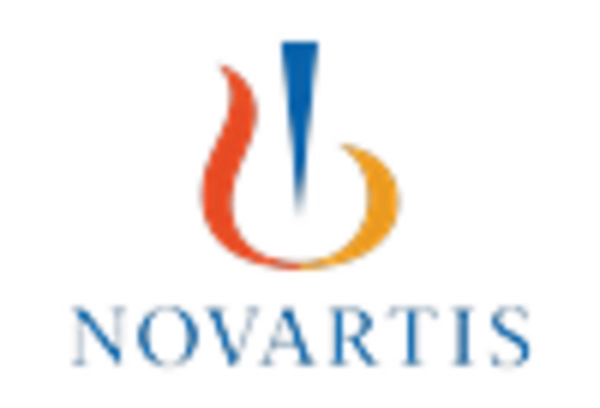Increasing Incidence of Cancer
The rising incidence of cancer worldwide is a primary driver for the Radiopharmaceuticals Market. As cancer cases continue to escalate, the demand for effective diagnostic and therapeutic solutions intensifies. Radiopharmaceuticals, which are pivotal in both imaging and treatment, are increasingly utilized in oncology. According to recent data, cancer is projected to affect approximately 1 in 5 individuals during their lifetime, leading to a surge in the need for advanced radiopharmaceuticals. This trend is likely to propel the market forward, as healthcare providers seek innovative solutions to enhance patient outcomes and improve survival rates. The Radiopharmaceuticals Market is thus positioned to benefit significantly from this growing patient population, as new therapies and imaging techniques are developed to address the complexities of cancer treatment.
Supportive Regulatory Framework
A supportive regulatory framework is crucial for the growth of the Radiopharmaceuticals Market. Regulatory bodies are increasingly recognizing the importance of radiopharmaceuticals in modern medicine, leading to streamlined approval processes for new products. This regulatory support fosters innovation and encourages investment in research and development. For instance, the introduction of expedited pathways for breakthrough therapies has enabled faster access to novel radiopharmaceuticals for patients. As a result, the market is likely to see an influx of new products that meet the evolving needs of healthcare providers and patients. The Radiopharmaceuticals Market stands to benefit from this favorable regulatory environment, which not only enhances the availability of innovative treatments but also promotes competition among manufacturers.
Advancements in Nuclear Medicine
Technological advancements in nuclear medicine are significantly influencing the Radiopharmaceuticals Market. Innovations in imaging techniques, such as positron emission tomography (PET) and single-photon emission computed tomography (SPECT), have enhanced the precision of diagnostics. These advancements facilitate earlier detection of diseases, particularly cancers, which is crucial for effective treatment. The market is witnessing a shift towards more sophisticated radiopharmaceuticals that offer improved efficacy and safety profiles. Furthermore, the development of new isotopes and radiolabeling techniques is expanding the therapeutic applications of radiopharmaceuticals. As a result, the Radiopharmaceuticals Market is expected to experience robust growth, driven by the continuous evolution of nuclear medicine technologies that enhance patient care and treatment outcomes.
Growing Demand for Targeted Therapies
The increasing demand for targeted therapies is reshaping the Radiopharmaceuticals Market. Patients and healthcare providers are increasingly favoring treatments that offer specificity and reduced side effects. Radiopharmaceuticals, which can be designed to target specific cellular receptors or tumor markers, align well with this trend. The market is projected to grow as more targeted radiopharmaceuticals are developed, particularly in oncology and cardiology. Recent estimates suggest that the targeted therapy segment could account for a substantial portion of the overall radiopharmaceuticals market by 2026. This shift towards personalized medicine is likely to drive innovation and investment in the Radiopharmaceuticals Market, as stakeholders seek to develop novel agents that cater to the unique needs of individual patients.
Rising Awareness and Acceptance of Nuclear Medicine
Rising awareness and acceptance of nuclear medicine among healthcare professionals and patients are driving the Radiopharmaceuticals Market. Educational initiatives and outreach programs have significantly improved understanding of the benefits and applications of radiopharmaceuticals. As more healthcare providers recognize the value of nuclear medicine in diagnostics and treatment, the adoption of radiopharmaceuticals is likely to increase. Additionally, patient acceptance of these therapies is growing, as they become more informed about the advantages of radiopharmaceuticals in managing various health conditions. This trend is expected to contribute to the expansion of the Radiopharmaceuticals Market, as increased utilization of these therapies leads to improved patient outcomes and satisfaction.
